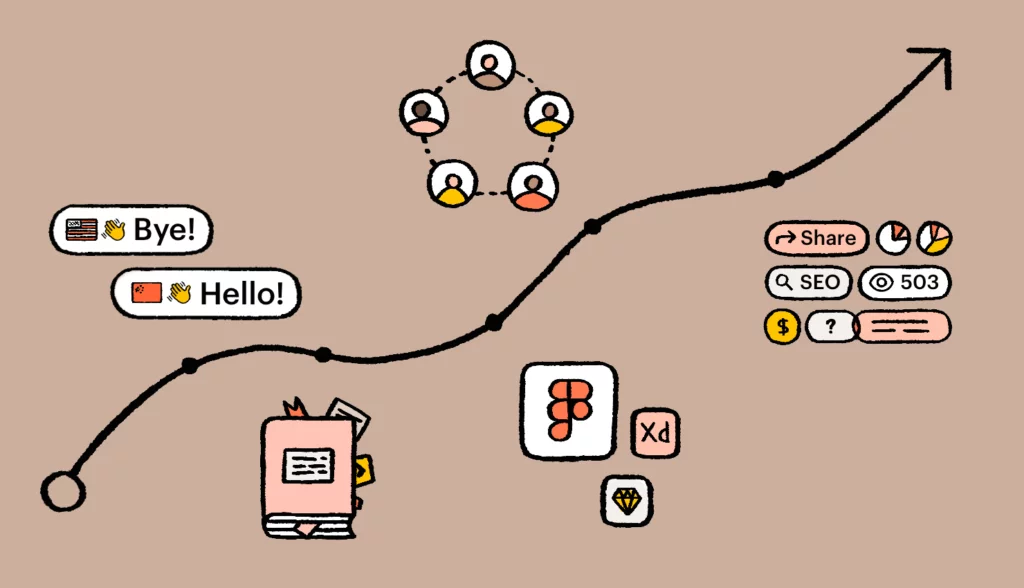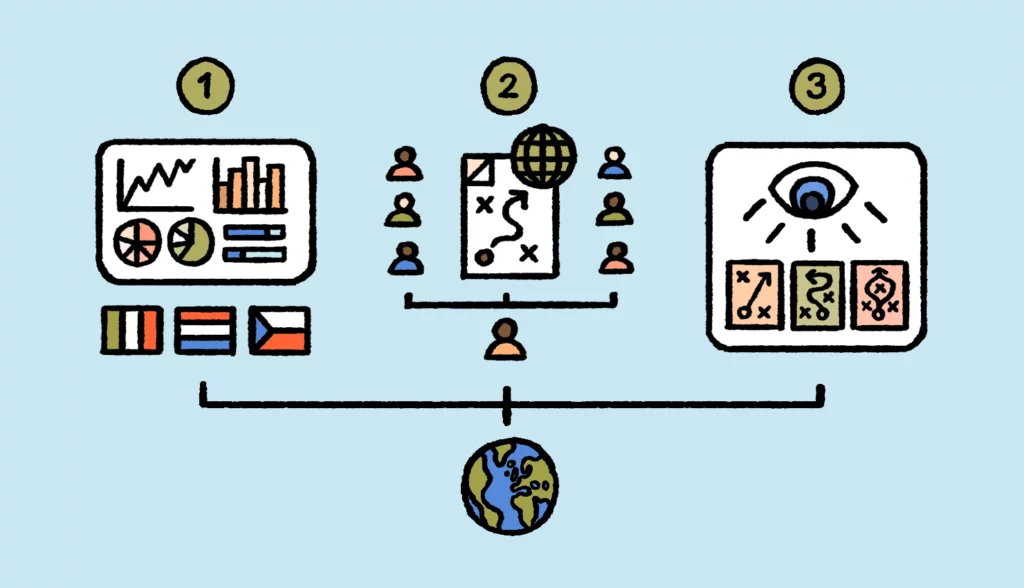Localization is crucial when it comes to advertising globally, and it goes beyond simply translating the words. A successful brand localization is composed of thousands of decisions made market-by-market, considering cultural differences and emotional appeal.
This article highlights strategies for success in advertising localization and provides a step-by-step guide on how to localize an advertising campaign. It also touches on product localization, ensuring that what you’re promoting is not only well-marketed but also appropriately adapted to meet local user expectations and needs.
Advertising localization: its importance for marketers
Of course, marketing is more than advertising – but advertising is often its most visible output. An ad campaign that started life on a New York copywriter’s notepad is the end product of many factors: the overall brand strategy, the concept of the individual campaign, the client’s tone of voice, and all the mandatories of style guides and color palettes. Which means that when adapting it for a new market, it’s about a lot more than the words.
An ad celebrating the strengths of the individual in America will be seen as selfish and arrogant in much of Asia. Tourist imagery of quaint but poor villages may be seen as insensitive by the villagers themselves. And taglines often don’t travel well, having to communicate a core concept in just a few words.
In other words, localization needs an awareness of both what you want to say, and what different audiences will hear. It’s about language, yes – but it’s also about emotion, culture, history, even geographical differences within a single country.
The localization process helps to ensure that these factors are carefully considered and adapted, allowing your advertising campaign to resonate emotionally and culturally with the target market. A successful international brand is made up of thousands of choices made market-by-market.
Fortunately, there are some strategies that’ll help as you expand your business internationally.
Global marketing playbook
You’ll get guidance on how to create a global marketing strategy and practical tips on assembling a team, selecting vendors, and more.
Get the playbookStrategies for success in advertising localization
Think transcreation, not translation
Strategy #1 in advertising localization is to treat it as essentially a recreation, not a translation. Look critically at your customer profile, and imagine what you want him/her to feel and think about your product or service. Only then write your marketing messages in their language. The original ad campaign should be a reference point, not the source material.
Seek local talent for local work
Before you expand to new markets, look for help from people actually working with translation of advertisements in the market you’re targeting – local experts who know the culture and language at native level. Always give them permission to question and suggest things. (And as an aside, it’s always easier to translate into your own language than your own into a foreign one.)
Think about imagery as much as the words
A brand isn’t the words; it’s a combination of product attributes, photographic styles, emotional appeal, and personality. So set rules for your imagery that match your local audience’s expectations. Beach party scenes aren’t ideal for the Muslim world; Americans expect diversity of people more than Chinese citizens; even colors connote different ideas around the world. Whatever you want your brand to say, make sure it’s communicated across all creative choices, especially in localized digital marketing, where visuals and messaging must align with local norms while staying true to your brand identity..
Don’t turn humor into a bad joke
Humor and other shared understandings are very cultural. What makes people laugh (or grimace) differs from place to place – including the time and place for it. Americans treat a shared joke as a unifying experience, but for many Germans, jokes have no role at work – and both audiences can find the sarcasm of British humor odd.
And always consider the platform!
Where you advertise matters, too. Those 36-sheet posters that worked roadside in the USA won’t fly in countries where the main channels are all online. A 30-second TV spot can’t use the same script as a 150-character PPC ad. First, consider the media mix for every country you’re targeting – then adapt your materials with each channel in mind.
With that, let’s go through some concrete steps of localizing an advertising campaign.
How to localize your advertising
1. Choose your source material
With so many choices, it’s worth considering where to start. In an ideal world, you choose your source first: the “pillar” from which all localization starts. (For some international advertisers, campaigns in regions like Europe and Asia are created first in English and then adapted – even if the English ads will never appear.)
2. Set your key assets early
Things like logos, taglines, and color palettes are worth setting in stone early on. Because once set, they become standard assets for everyone on your team to use – and for a global brand that team can span hundreds of people. (Platforms like Lokalise make this very easy.) You’ll also want to write down your core vision in a Brand Bible, Style Guide, or Look Book. If you’re working with translators, of course those documents need to be translated too.
3. Check if your brand attributes work everywhere
Few attitudes are universal – so if your brand has a distinct personality, make sure those attributes are consistent across all your markets when you’re doing translation of advertisements. You may have to communicate differently, or to a different audience, or on a different channel, to get the effect you want.
4. Match the advertising format to the audience
Perhaps your brand relies on beautiful landscape pictures in the West, but in Japan (where ads are text-heavy) or China (where product shots are a given) you’ll need to adapt your campaign to local tastes. So do some research on what works, and set templates accordingly.
Utilizing customizable poster templates can streamline this adaptation process, ensuring your visuals resonate with the target audience.
5. Start small and test for quick wins
Aim for what engineers call an MVP: Minimum Viable Product. What’s the best place to start that would give you early success? Perhaps it’s not launching your whole product promise across South America, but a single SKU advertised in a single city. Global brands are built one piece at a time.
6. Transcreate the most important pieces first
Look at your web and campaign statistics, and you’ll find some assets matter more than others. One landing page may produce 80% of your leads; one marketing email seems to go on selling year after year; a few Help Center FAQs get read again and again. Focus on these first, get them into your market, and watch the results. These are where your most important learnings come from.
7. And never stop learning or improving!
Advertising localization is never “done”’; it’s a continuous process. So build best practices like regular audits of your creative materials country by country, quarterly performance reviews of your web clicks and conversions, and keep the conversation going with your local transcreation and translation partners. Remember, a “failure” is only a failure if you don’t learn from it.
Answering the challenges of localized advertising
All this sounds expensive, doesn’t it – but it doesn’t have to be. Don’t think of it as a cost, but an investment, and focus on the bang-per-buck (or Return on investment).
The biggest factor affecting how much bang you get is human talent. The right person, in-market and in tune with its cultural nuances, is a huge asset that can save you a ton of money. They can understand your problem in full, because they’ve handled similar things before. They can advise on what to do and at what scale. And they can act as your local advocate, making sure transcreation and translation happen at the right time.
Of course, great people also need a reliable platform to get their work done: one that stores brand assets, provides a way to collaborate, and lets each person feel they’re contributing to something bigger than themselves. And that’s perhaps the best way to answer the challenges of advertising localization: connect your experts in a way that lets their talents shine.
Success in advertising localization means managing and measuring
Thousands of companies use Lokalise for transcreation, because it lets people in different places contribute their specialized skills to multi-lingual, multi-market, multi-cultural advertising campaigns easily and efficiently. It’s also a powerful tool for SaaS localization, helping teams adapt software content and interfaces for different regions while maintaining consistency and collaboration across markets. And there’s a bonus: with every change and update recorded, you can see where the effort is having the most effect and where you need more resources.
That’s advertising localization. While there are many things to think about, it doesn’t have to be impossibly complicated – or unreasonably pricey. If you’re a marketer with big ambitions for your global brand, get our global marketing playbook here:
Global marketing playbook
You’ll get guidance on how to create a global marketing strategy and practical tips on assembling a team, selecting vendors, and more.
Get the playbookFAQs
1. How can technology assist in advertising localization?
Advertising localization is a combination of many factors: following brand guidelines, creating core assets, and deciding tone-of-voice and style guides across many markets. All these assets need to be created, managed, and rolled out smoothly and consistently – and that’s where technology comes in. The right platform for transcreating, translating, and adapting content of all kinds for different markets can slash development time and make the most of every advertising dollar, principally because it cuts out all the duplication and busywork of individual creators working in isolation.
2. How can advertising localization help businesses expand globally?
Localizing your advertising campaigns carries many benefits, such as ensuring your product or service “feels right” to local audiences and building a brand that crosses borders to smooth out the business risks associated with being active in only one market. But most of all, advertising localization brings your offer to a much larger audience, with the opportunity for global growth even if your home market is saturated.





